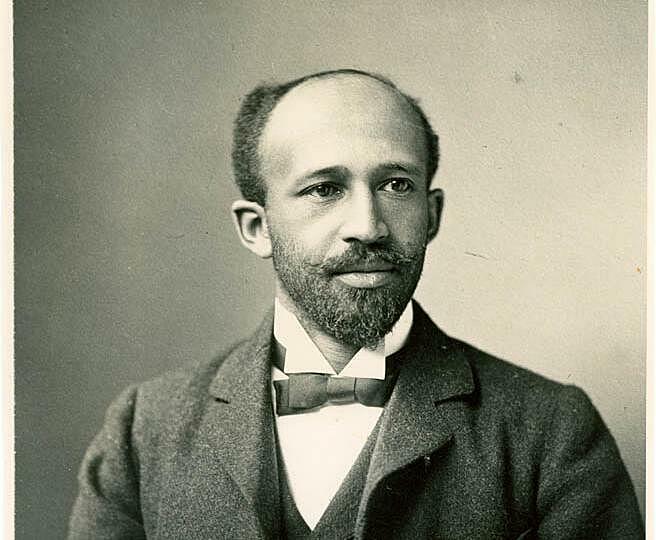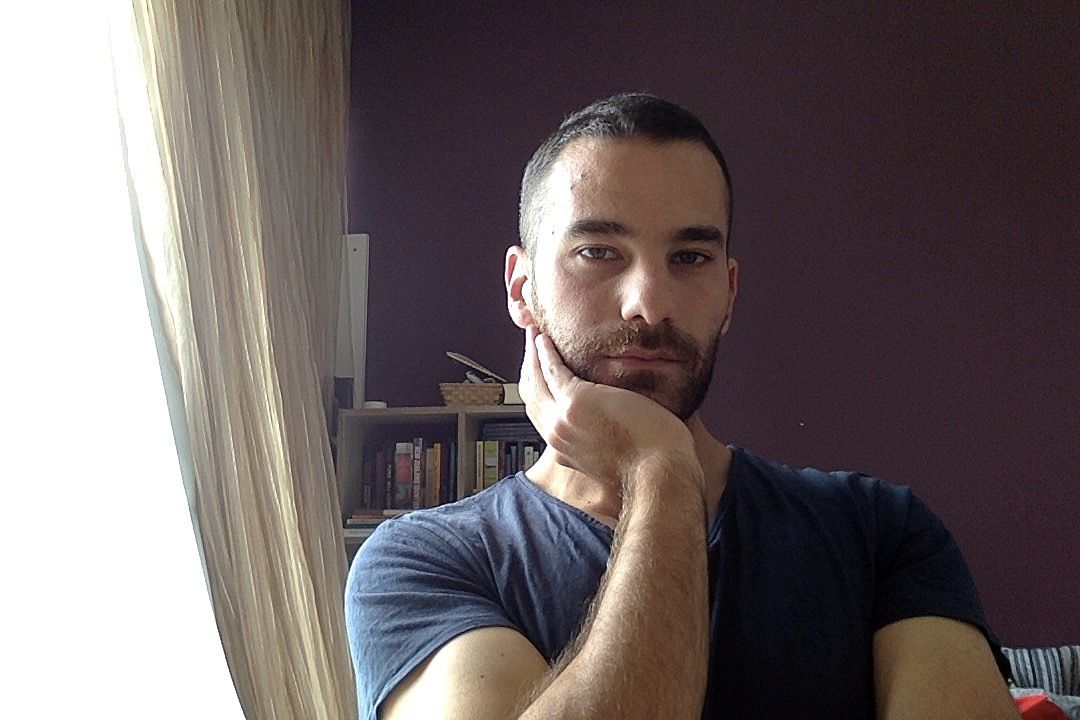The Muslim Problem
Faisal Al-Asaad on how the Muslim experience is typified in a simple TV interview: "How does it feel to be a problem?"
Watching a Newshub interview a few weeks ago, I think I felt something that Australian Muslim friends try often to describe, but that I’d never really understood.
In the wake of the London Bridge attack, Duncan Garner’s discussion with the president of the Federation of Islamic Associations of New Zealand followed all too familiar lines that nevertheless rang in my ears with unsettling pitch.
Phrases like “kiwi Muslims”; questions like “for people like me and people around the country – are these people Muslims, these terrorists?”; responses like “they’re a bunch of lunatics”; approbations like “it’s time for you to send a message that this is not okay”; vindications like “we’re law-abiding citizens”, strung together like the script of a bad play, or the verses of a turgid spoken-word performance that makes you squirm until the very end. But the final stanza doesn’t arrive without a crowning moment of sheer cringe: “What about the chances of an attack on NZ soil… are you concerned that you have any radicals within your group?”
The interview drew to its last, nauseating second and it didn’t take long to fully appreciate the meaning of that strange sensation many Western Muslims experience daily, but which becomes so intensely palpable during these particular moments. Precisely as an experience, as something that I was ‘in’ at that moment – rather than something I ‘carried’ or ‘possessed’ as an identity – it made clear an aspect of Islamophobia usually taken for granted, which is the moment of the body’s rude awakening to that old question: “How does it feel to be a problem?”
This is, ultimately, the question posed to us by race – by the production of our modern world through relations of race. It’s an inescapable question, not just because it keeps reappearing, but also because for those to whom it’s addressed it appears as an all-encompassing presence, invading every field of perception. ‘How does it feel…?’ – race isn’t simply a conceptual problem, it’s also a perceptual one; its archives are riddled with testimonies to those encounters when language and knowledge break down. Think of Frantz Fanon, the great thinker of colonial racism, when, striving desperately to prove himself equal to those around him, he is met by a child’s searching gaze and the declaration: “look, a negro!” In that moment, rejection from the social world casts Fanon back into the nausea and deliriums of social death, to existence as an invasive pathogen inside the living body, meant for assimilation or elimination – a pathology, a problem.
“How does it feel to be a problem?”
“How does it feel to be a problem?” is a question we in fact find much earlier in the father of the sociology of race, W. E. B Du Bois. Muslims reading his work today find in it an archaic contemporary: a man writing in one fin de siècle only to be vindicated by the next. It’s as if he was waiting for us around a bend in the road to ask with a knowing, mournful smile: “How does it feel to finally be the problem?” For Du Bois it was the colour line, instituting itself most notably across the hyphenated identity of the African-American, which posed to him the problem of the twentieth century. The colour line was also a mirror, much like the child’s piercing gaze in Fanon’s encounter, and in it one could see reflected their legacy: “Here it is, your inferiority; it wasn’t slavery that held you in chains, it’s you – you’re the problem.”
Cast as the problem, one is cast out. But to where? Exile for the diasporic leaves them stranded in the very social world they are rejected from. At this point, there’s nothing but to strive for affirmation and acceptance, despite all evidence to the contrary. They must turn this forced entrapment into voluntary attachment, making a choice out of necessity (which is no choice), and often by transfiguring the quest for ‘liberation’ into a quest for ‘belonging’. In this way, race as ‘problem’ becomes the living quality of the racialised. Just like Fanon and others, Du Bois was interested in the internalisation of a society’s prejudice as the individual’s ‘problem’.
Here the sensation of being a Muslim today begins to make sense. The notion of ‘double consciousness’ describes not necessarily multiple identities or cultures but the condition of being colonised as the outsider, rather than by an outsider. Hyphenations like the African-American, for Du Bois, were symptoms of adaptation; the adaptation of life, of the living, to an environment alien and hostile to it. Striving against this environment, like muscular tension, translates a greater force of resistance into a lasting domination to which the body is subjected. As displaced, the colonised can therefore only strive oppositionally for so long before its struggle is oriented inwards:
It is a peculiar sensation, this double-consciousness, this sense of always looking at one’s self through the eyes of others, of measuring one’s soul by the tape of a world that looks on in amused contempt and pity
Du Bois, The Souls of Black Folk
This sensation, the answer to “how does it feel to be a problem?”, is a peculiar sensation of ‘twoness’; not the comfortable twoness of the cosmopolitan, but the conflictual twoness of the racialised.
This sensation often depicted in Du Bois’s work as an ocular capacity, a second sight, because of a particular fascination with the ghostly. Conflictual twoness is produced by possession: the racialised diasporic is possessed of second sight, a sight that allows them to see themselves through the eyes of the other precisely because they are in turn possessed by this other. The television interview is the perfect enactment of this situation. Identified as ‘kiwi Muslim’, I can see the Muslim leader sitting in the spotlight and anticipate his responses, charging him with responsibility to address the ‘problem’. But as kiwi Muslim I also identify with him and see myself in his position: I can feel the spotlight and the pressure to exonerate the responsibility I had charged him with; feel the ‘amused contempt and pity’ of the other.
It is a peculiar sensation precisely in the way that you become hyper-aware of the twoness of which you’re possessed. It is a nauseating sensation in the way that you wish to eject that invasive, unsettling thing inside.
But of course, they can also see – our second sight is borrowed, after all. They see and know that we are in two minds; they know that we harbour the very amused contempt and pity we are invested with. In being seen and knowing that we are seen, we do our best to be seen otherwise. In the ocular economy of race, we find ourselves desiring the other’s gaze since it is only through this gaze that we can see ourselves. Instead of contempt and pity, we want esteem and valorisation. But of course, changing the nature of perception, even if it’s possible, doesn’t change its orientation: it is still us caught in the gaze of the other, and the more we seek to appear differently, the more we affirm the other’s suspicion that it is indeed all just appearance – all a duplicitous act. No wonder that everything Muslim leaders say seems to fall just short of convincing. In fact, it lacks conviction in and of itself: in appearing duplicitous, in inviting suspicion, we begin to suspect ourselves. Do we do enough to change perceptions? Do we participate enough? Do we integrate enough? Do we say and do enough about the ‘problems’ in our community?
No wonder that everything Muslim leaders say seems to fall just short of convincing.
The problem with feeling like the problem – with being the problem – in any situation, is this rabbit hole of endless self-examination we’re lured into. It’s probably safe to say that many of us have a sense of how woefully unproductive this is: instead of doing something to change the situation, we fall into a habit of introspective contemplation. In turning away from social relations to scrutinise the self, this reflexive posture heightens a crucial tendency present in any social context. The pertinent question is to what extent it is allowed to become incapacitating: to overwhelm our capacity to act on and change the world around us. In other words, to what extent can this centripetal tendency overwhelm the centrifugal tendency in which one moves outside the self.
Race skews this dynamic in such a way as to incapacitate the individual. From Du Bois to Fanon and beyond, literature’s replete with metaphors of prisons, cages and chains to illuminate how the racialised self becomes the very trap and the boundary beyond which one’s movement is restricted. Adopting the gaze of the other, a gaze fixed on us, Muslims adopt its orientation, which, in moving inwardly, shies away from an understanding of ‘social facts’ in favour of identifying ‘moral problems’. The question becomes not ‘what is it in the relations and structures of our society that is problematic?’, but instead ‘what is it about us, our identity, our community that is the problem?’ But this isn’t just an epistemological issue – not just about knowledge and self-understanding – but also a practical one. Meaningful and intentional action becomes, if not altogether impossible, a highly inefficient and psychically taxing endeavour.
It’s for this reason that the study of race has been at its basis the study of the creation of a ‘non-actional’ person. Fanon reaching out for a packet of cigarettes and finding in the very outward movement of his hand not a habit but a premeditation aptly illustrates the claustrophobic reality of this kind of person; a person whose every movement is laden with the cumbersome weight of self-awareness. It’s a reality in which every intentional movement of the body becomes subject to consideration and reconsideration. It’s wanting to stand up and walk over as, in a moment of perfect serendipity, my attention to the TV interview is redirected across the room to a group of students loudly postulating the virtues of ‘lax immigration policies’ in the age of ISIS – and instead finding myself glued to the chair as images of an aggressive, bearded Muslim man harassing wholesome, innocuous white kids assail my mind.
“How does it feel to be a problem?” points us towards the double bind of the racialising moment: being the ‘problem’ that we lack the practical capacity to act on or ‘fix’. This is precisely what makes race generally, and Islamophobia specifically, so durable, and why it’s altogether good business. All sorts of ‘solutions’ – theological, social, managerial, correctional – have been offered and will continue to be offered by the Muslim leadership as well as western governments to the Muslim ‘problem’. Differentially investing us in this problem-space, race buttresses itself as a factory of unfixable problems, a permanent crisis in social relations.


